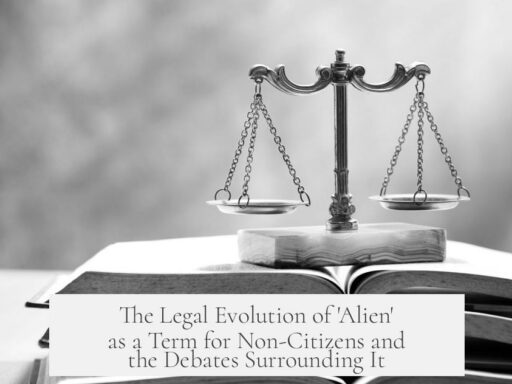Manhattan, as part of New Netherland, likely would not have held substantial value for the Dutch if it remained a lone colony surrounded by English settlements. Despite its modern prominence as New York City, the Dutch colony struggled economically and socially, failing to align with Dutch colonial strategies or deliver consistent profits.
New Netherland encompassed more territory than just Manhattan, including areas like Albany (then Rensselaerswyck). Its transfer to the British was part of a larger deal exchanging territories, including lucrative Caribbean colonies such as Suriname. Historical analysis shows that the exchange favored the Dutch economically. Unlike the Caribbean colonies, New Netherland never proved profitable during its roughly sixty years under Dutch control.
Throughout its existence, New Netherland was a losing enterprise for the Dutch West India Company. The colony failed to generate sustained returns and instead drained company resources. New Amsterdam (Manhattan) initially served as a fur-trading outpost, matching the Dutch preference for focused trade bases rather than large settlement colonies. However, the colony evolved into a more traditional urban settlement, attracting diverse settlers uninterested in pure commercial profits.
This demographic shift conflicted with the Dutch colonial model. The Dutch typically ran small, tightly controlled trading outposts in places like the East Indies and the Caribbean. These held strategic value due to high-value commodities like spices and sugar. New Netherland’s diversion to a city-based economy diluted this focus, increasing management challenges and social unrest.
- New Amsterdam’s growth as a city reduced its function as a fortified trading hub.
- Internal governance issues, including corruption and unpopularity of appointed directors, destabilized the colony.
- When Peter Stuyvesant, a strict military administrator, arrived to restore order, his authoritarian style alienated settlers seeking representation.
These factors eroded the colony’s stability and further detracted from its value. The settlers’ demands for political rights and resistance against strict governance undermined company control. Ultimately, these tensions contributed to the colony’s easy surrender to a British fleet.
As a lone Dutch colony surrounded by English holdings, Manhattan would have faced additional challenges:
- Isolation limited trade opportunities and exposed it to political and military pressure.
- Lack of integration with other Dutch territories weakened supply lines and support networks.
- English colonies encircling New Netherland controlled the surrounding land and waterways, restricting expansion and influence.
In essence, Manhattan’s geographic position as an island in a sea of English colonies would have intensified its vulnerability. Without neighboring Dutch territories to bolster its economy and security, it would have been difficult to sustain profitability or strategic value. This context suggests that the colony’s perceived present-day value was not reflective of its 17th-century situation.
The Dutch colonies thrived where they matched the empire’s commercial model—small, efficient outposts focused on lucrative trade goods. Suriname, a sugar-producing colony gained from the British in the territorial swap, aligned better with this model and remained profitable. In contrast, New Netherland was an awkward fit for the Dutch due to settlement patterns and management issues. The colony struggled to transition from an outpost to a viable economic entity.
| Aspect | Dutch New Netherland | Typical Dutch Trade Colonies |
|---|---|---|
| Primary Economy | Fur trade initially, then urban settlement | High-value commodities (spices, sugar, slaves) |
| Colony Type | Settlement colony with diverse populace | Small trading outposts with mercenaries |
| Profitability | Consistently unprofitable | Highly profitable |
| Governance | Corrupt, unpopular officials, unrest | Firm control by Dutch companies |
| Strategic Position | Isolated among English colonies | Integrated network of Dutch territories |
Given these points, the Dutch were unlikely to have gained lasting value from maintaining Manhattan as a lone colony. The British takeover solved many strategic problems by consolidating the surrounding territory. For the Dutch, trading New Netherland for Caribbean colonies was a rational decision reflecting the realities of their colonial strengths and challenges.
- New Netherland, including Manhattan, was never a profitable colony under Dutch rule.
- Its evolution into a settlement clashed with Dutch colonial trade-focused strategies.
- Management difficulties and social unrest undermined its stability and value.
- Manhattan’s isolation amid English colonies would have limited its economic and strategic potential.
- The territorial exchange for Caribbean colonies favored the Dutch colonial model and profits.
Did the Dutch Get Swindled Trading Manhattan for Suriname?
In retellings of how the Dutch handed over Manhattan to the British in exchange for Suriname, you hear it said that the Dutch got swindled. But was Manhattan really the prize it’s cracked up to be? If it stayed a lone Dutch colony surrounded by English territories, would it have been a treasure or a white elephant?
Let’s bust the myth that the Dutch got the short end of the stick. In fact, the Dutch decision to trade New Netherland—including Manhattan—for the British Caribbean territories was a shrewd move aligned with their colonial strategy and real economic interests.
New Netherland: Not Just Manhattan, and Not Just a Cash Cow
First, New Netherland wasn’t just Manhattan. It stretched north to Albany (then Rensselaerswyck) and was, in fact, considerably larger than the tiny island we focus on today.
Despite the lush harbor and fertile lands, New Netherland bled money throughout its roughly 60 years under Dutch control. The colony was consistently unprofitable. While modern New York beams with wealth, back then, it was a financial drain. How so?
The Dutch had a specific colonial model. They weren’t interested in sprawling territorial claims or city-building like the English. Instead, the Dutch excelled at establishing small, tightly controlled trade outposts focused on extracting extremely valuable resources or selling high-value goods. Think of their empire as a network of chess-like trading posts, rather than vast empires populated by waves of settlers.
Why Manhattan Didn’t Fit the Dutch Model
New Netherland was supposed to work as a fur trading outpost, part of the vast network the Dutch East India Company had perfected in Asia and Africa. But from the start, the American colony skewed away from this plan. It attracted settlers from all over the Atlantic world with ambitions not limited to fur trading.
These settlers wanted land, farms, a real city, not a commercial entrepôt. By the 1650s, Nieuw Amsterdam was no longer just a trading fort—it looked and acted like a real city. It needed infrastructure, governance, and order.
This mismatch caused headaches for the West India Company. Directors were often unpopular or corrupt. Enter Peter Stuyvesant, a military man sent to straighten things out. But the settlers, accustomed to a more laissez-faire style, rebelled. They demanded more say, more representation, not to mention freedom from “drunken” administrators.
The British Context: Manhattan in an English Sea
Imagine Manhattan as a lone Dutch island surrounded by English colonies. That’s a tough spot to be in. The English colonies had two colonial strategies:
- Settlement colonies focused on growing populations and developing economies (like New England).
- Extractive colonies in the Caribbean, relying heavily on slave labor and plantation economies.
New Netherland, with its unfocused and declining profitability, was an experiment gone embarrassingly wrong for the Dutch West India Company. Administratively, it was burdened by unrest, corruption, and settlers who didn’t care about company profits.
Compared to the sugar-producing Caribbean islands like Suriname, which were reliably profitable and demanded less direct governance (slave plantations, anyone?), New Netherland looked like a headache with no payoff.
So, Was the Deal Fair?
The exchange was made “at sword point,” yes. But not unfairly so. The Dutch traded an unprofitable and difficult colony for thriving Caribbean plantations rich in sugar and spices. These commodities generated continuous revenue with less administrative fuss.
If Manhattan had stayed a lone Dutch colony, cut off in an ocean of English settlements, its value would have been even more questionable. It wouldn’t thrive as a Dutch outpost. The Dutch needed their empire to be a network of profitable trade posts, not isolated cities under economic strain.
What Can We Learn From This Colonial Chess Match?
- Economic models matter: Success depends on fitting strategy to reality. The Dutch excelled in carefully managed trade outposts but struggled with settlement colonies.
- Geopolitics shape value: A colony’s worth isn’t just about land or location but its neighborhood and political context.
- Swapping an unproductive liability for a reliable asset isn’t getting swindled. Sometimes it’s sound business.
The story reminds us that history isn’t always about who ended up with the “prize.” Sometimes it’s about who made the smartest trade given the facts on the ground. The Dutch knew their strengths and weaknesses. Manhattan, as a lone Dutch colony surrounded by English settlements, simply wasn’t a jackpot for them. Suriname and the Caribbean might not be as glamorous today as Manhattan, but back then, they were the better deal.
Isn’t it fascinating how the idea of “value” changes when you zoom out from today’s skyscrapers and consider the gritty reality of 17th-century colonial economics? It might make you think twice the next time you hear about colonial “swindles.”


